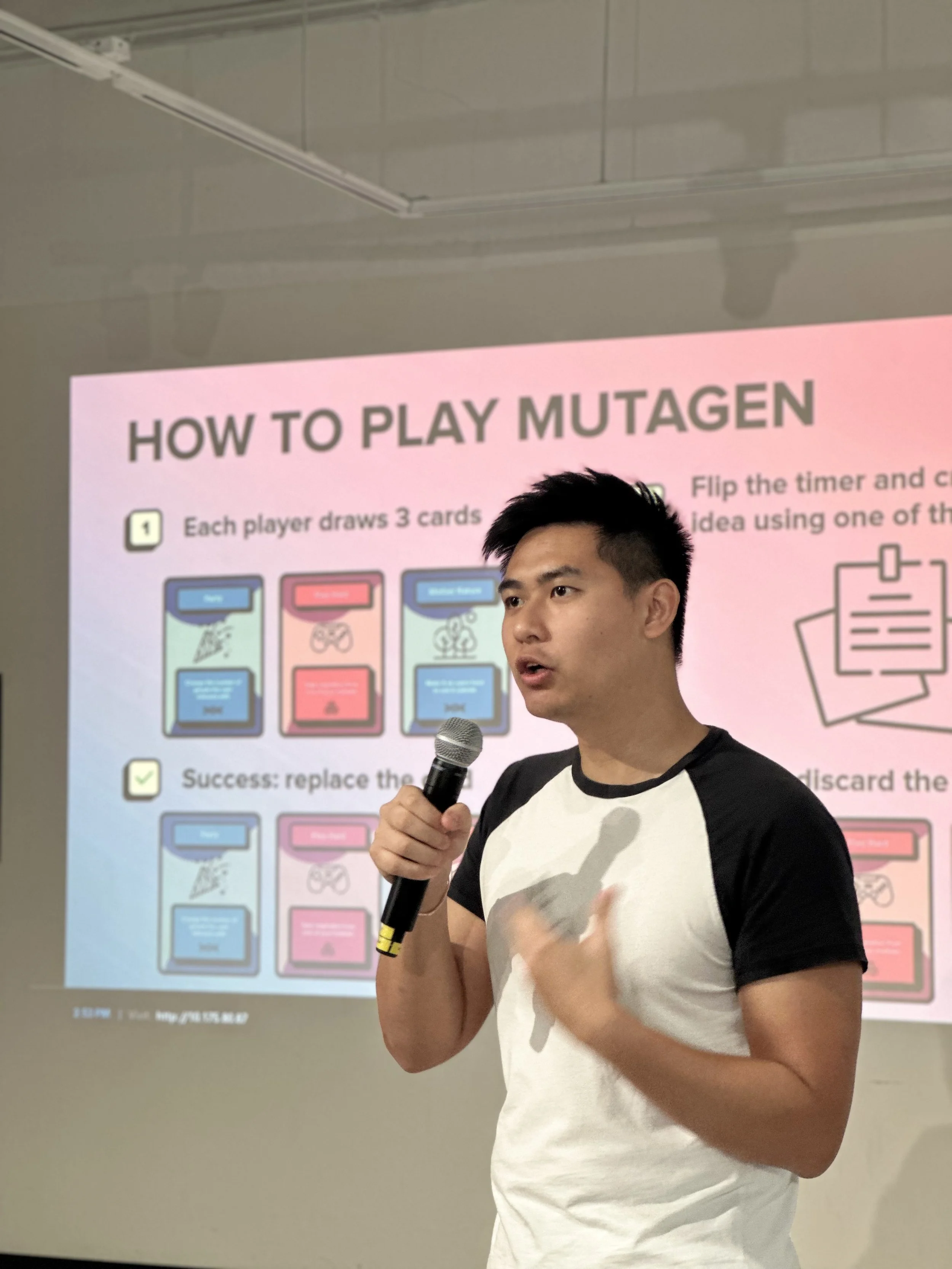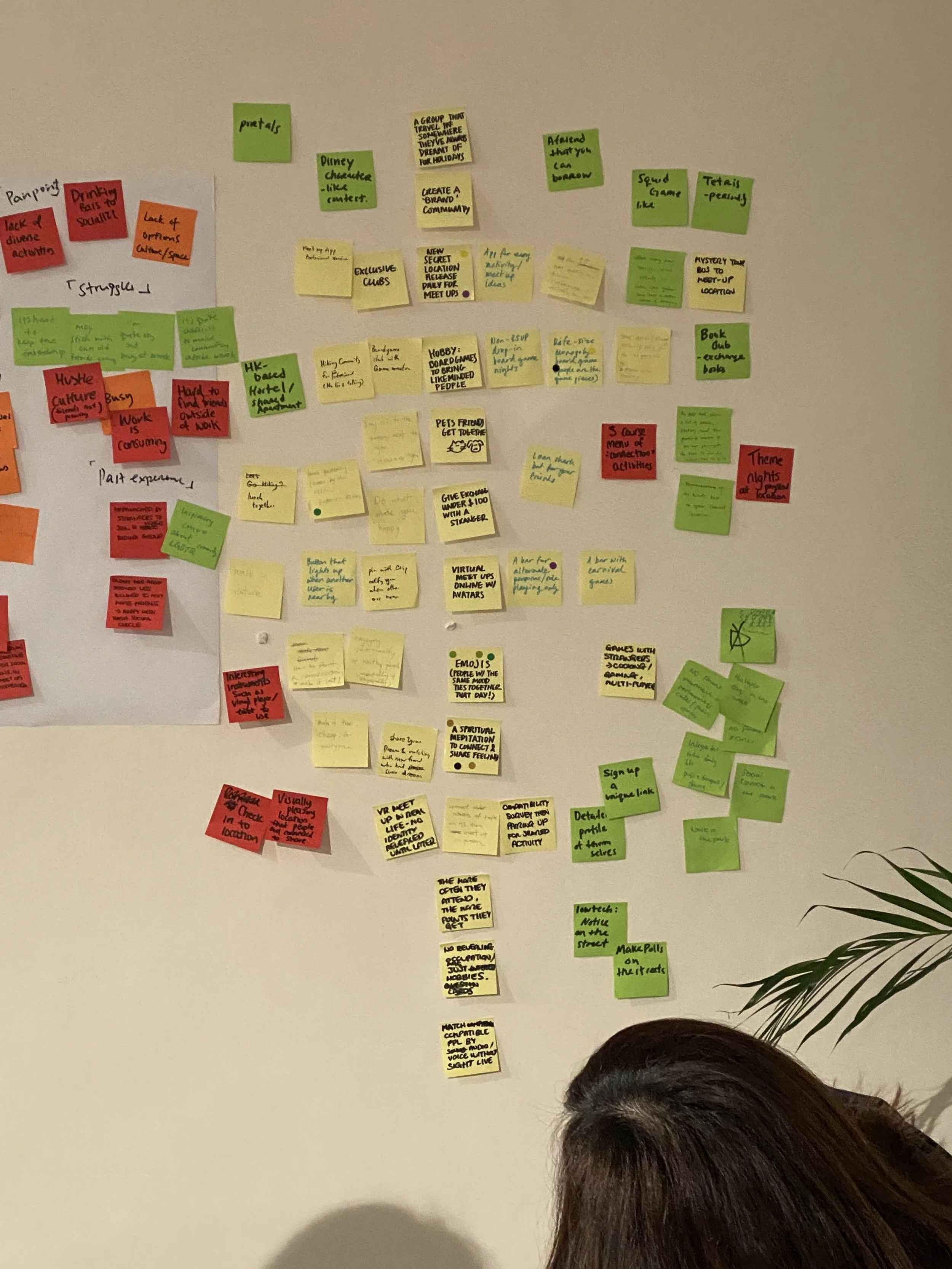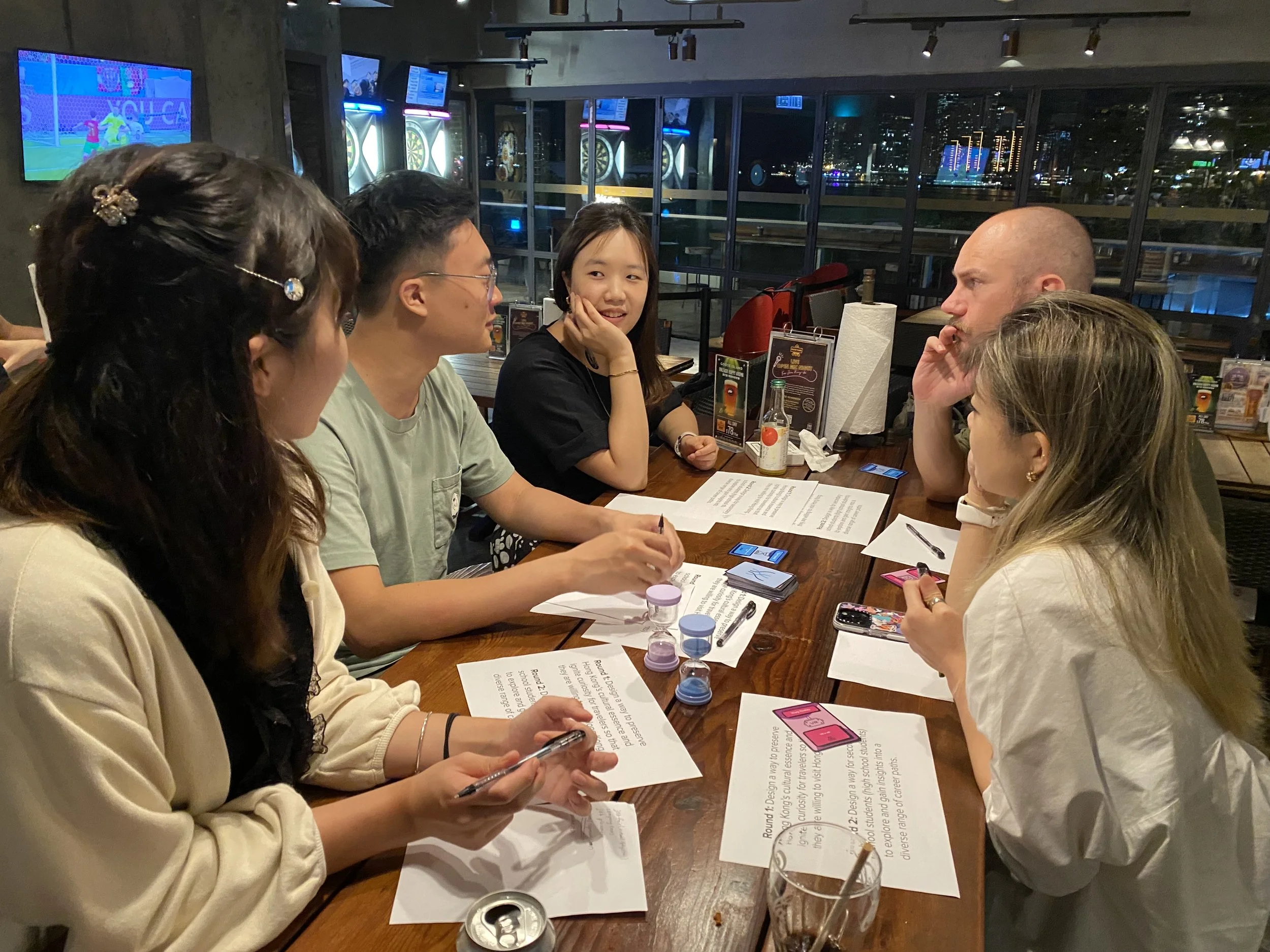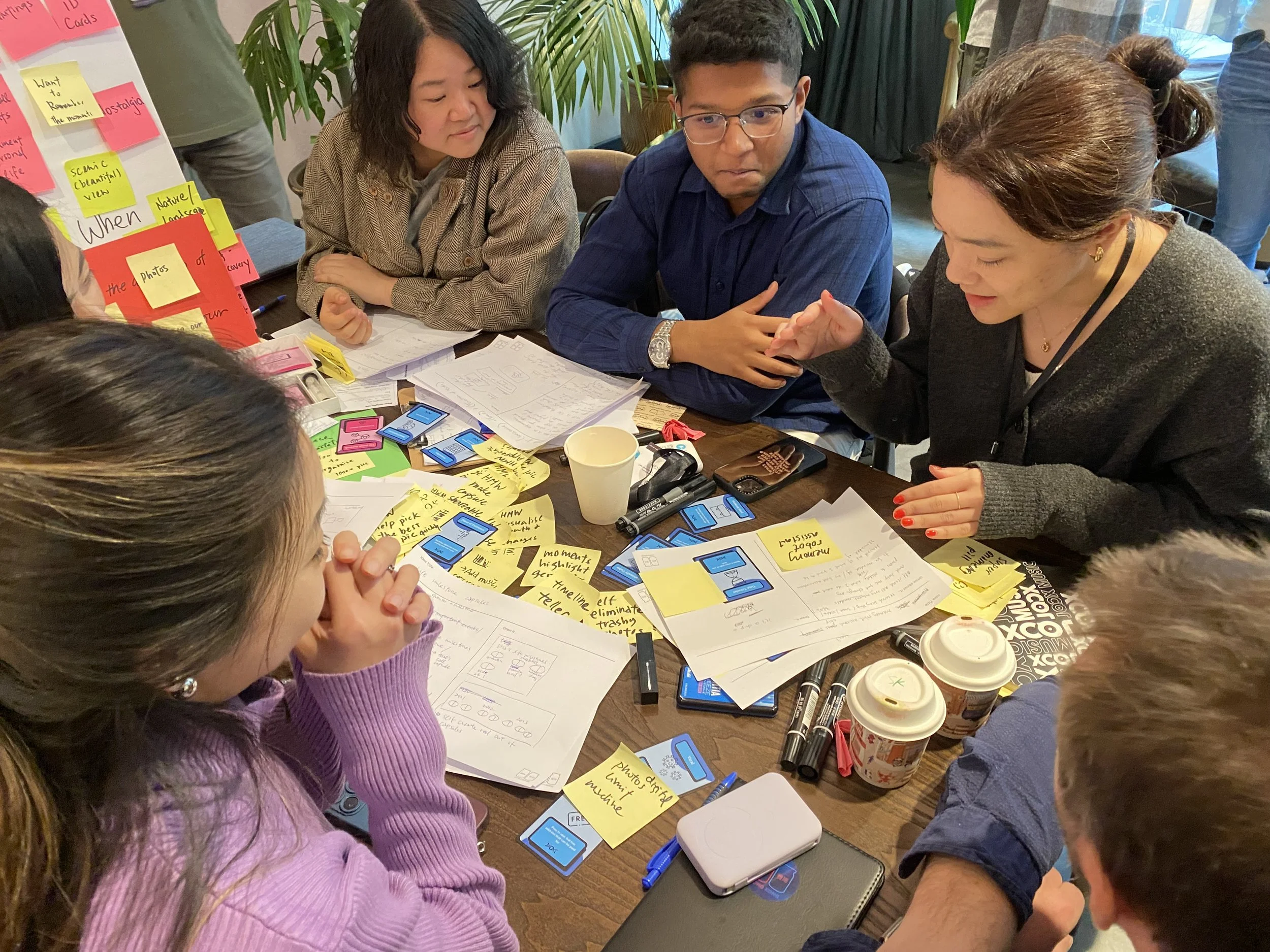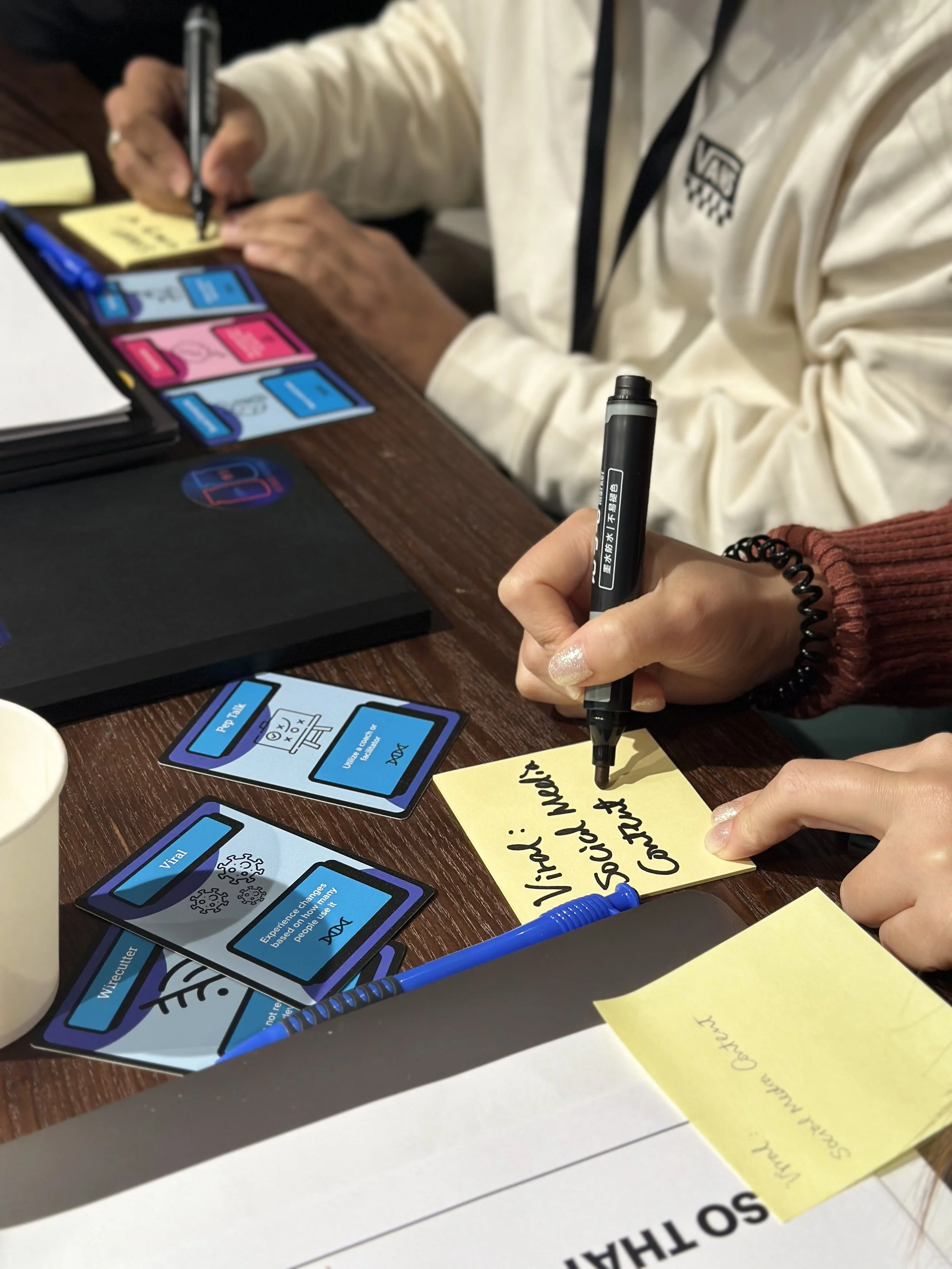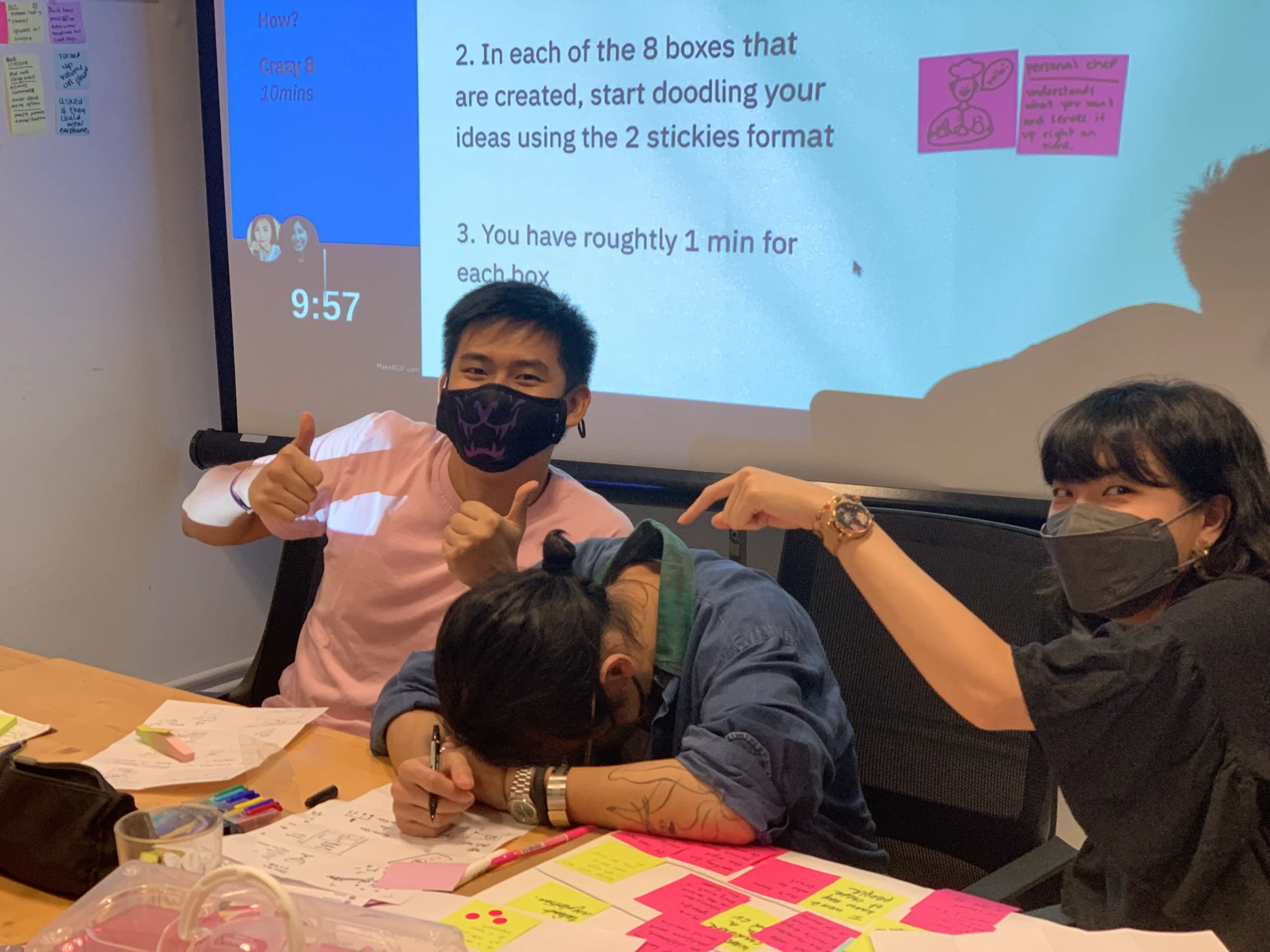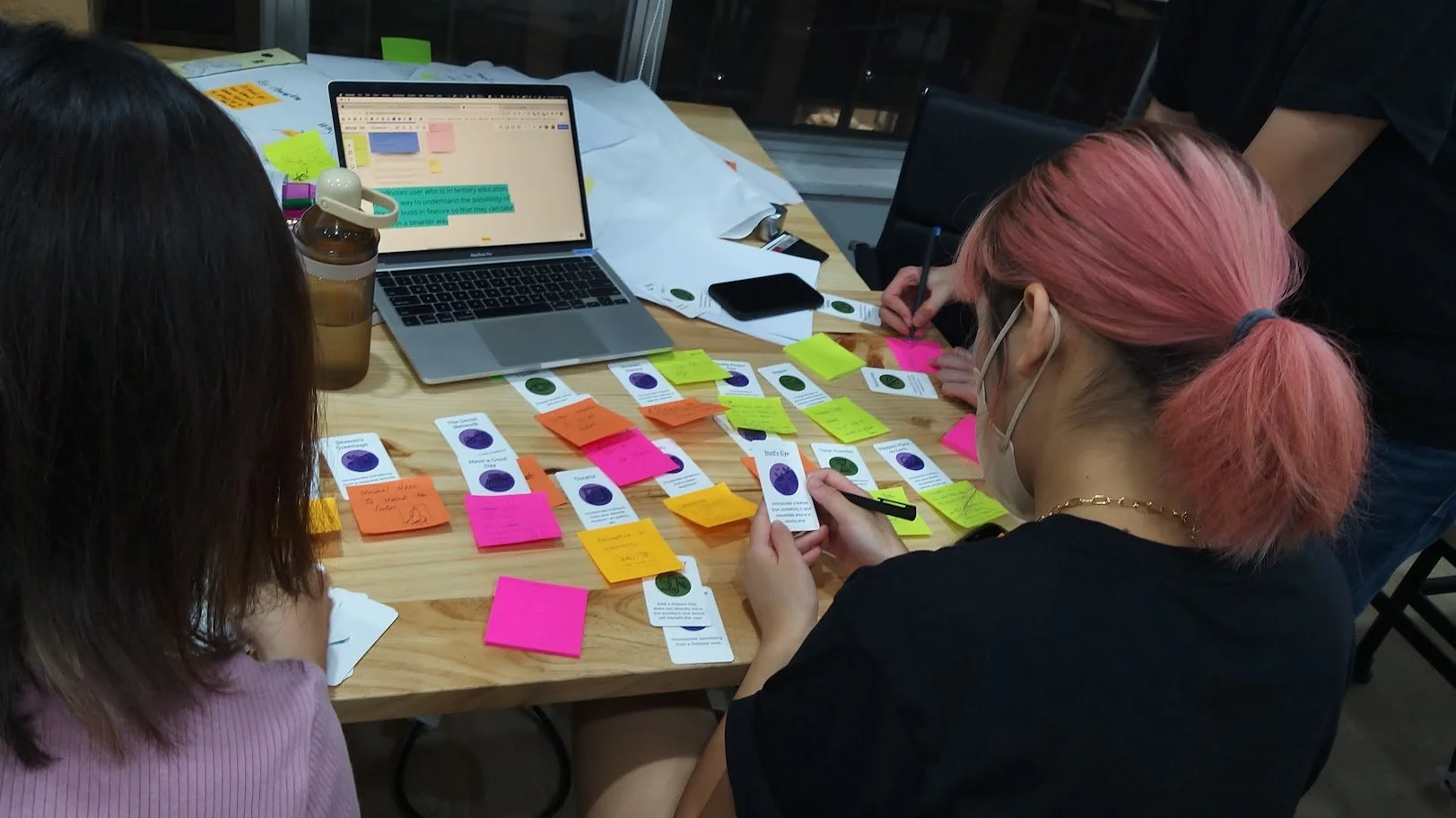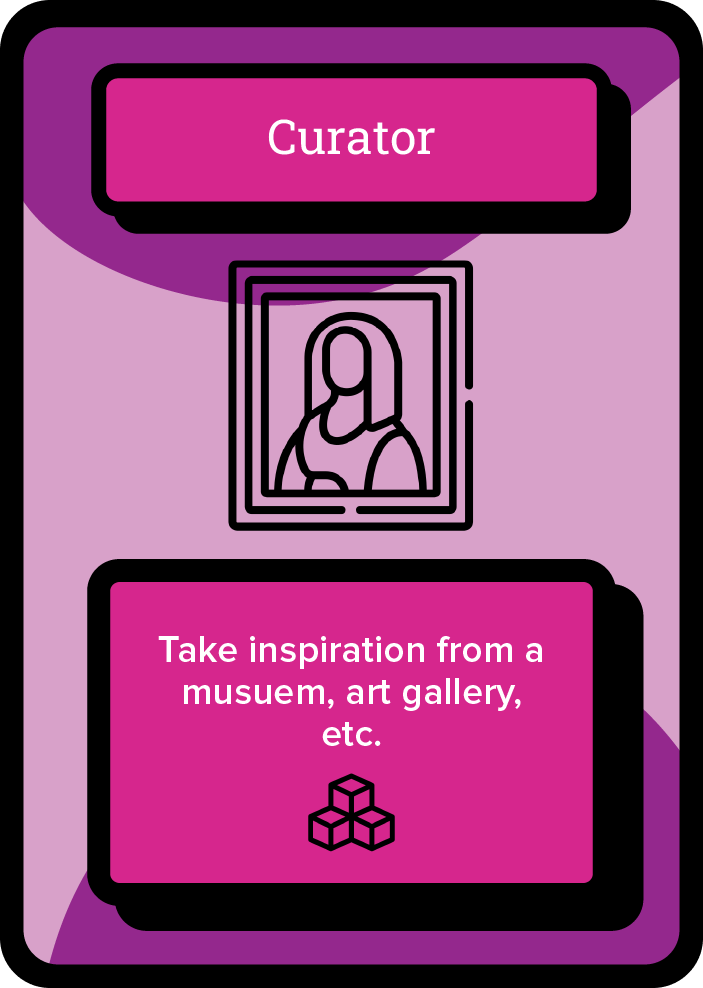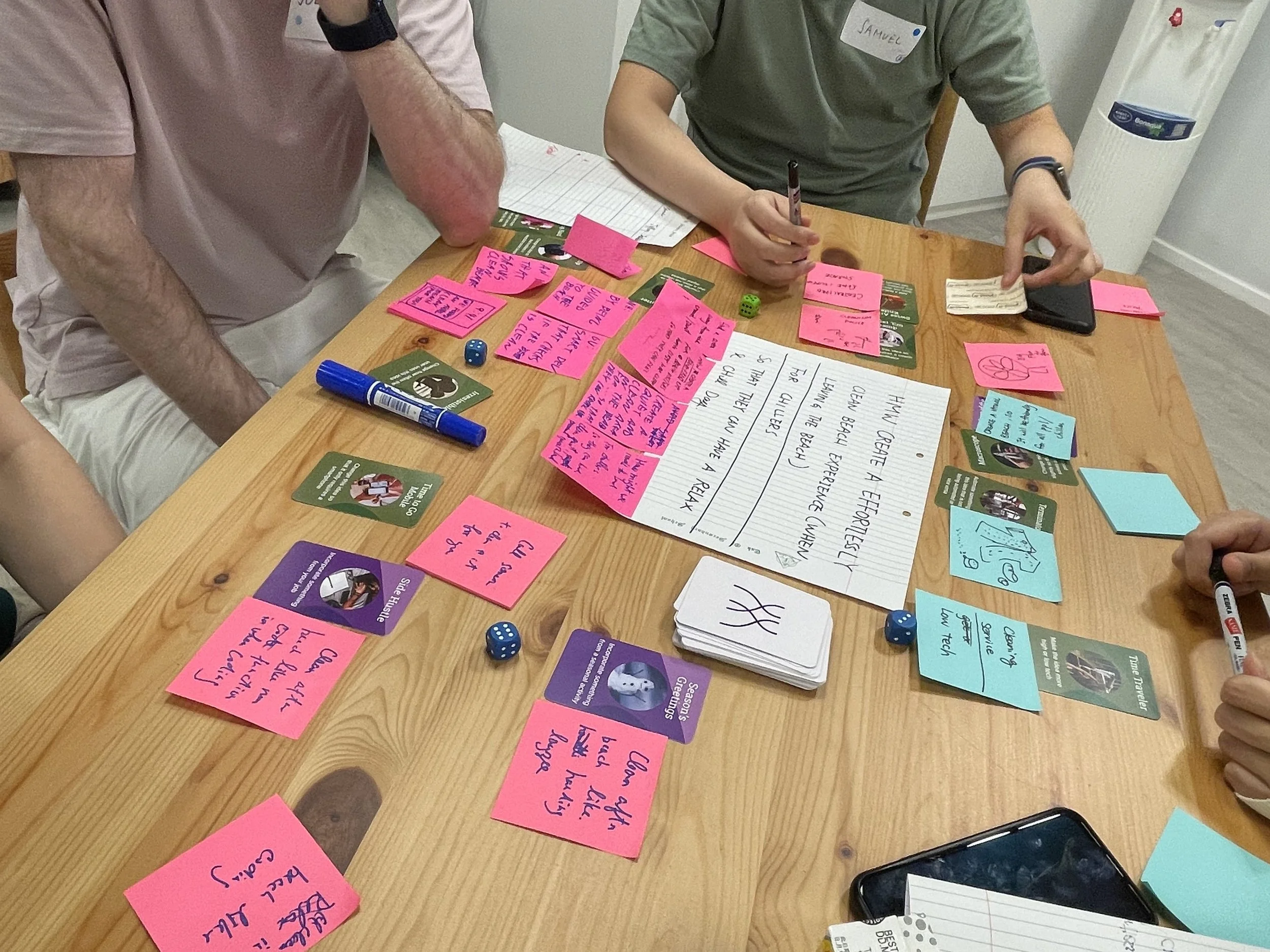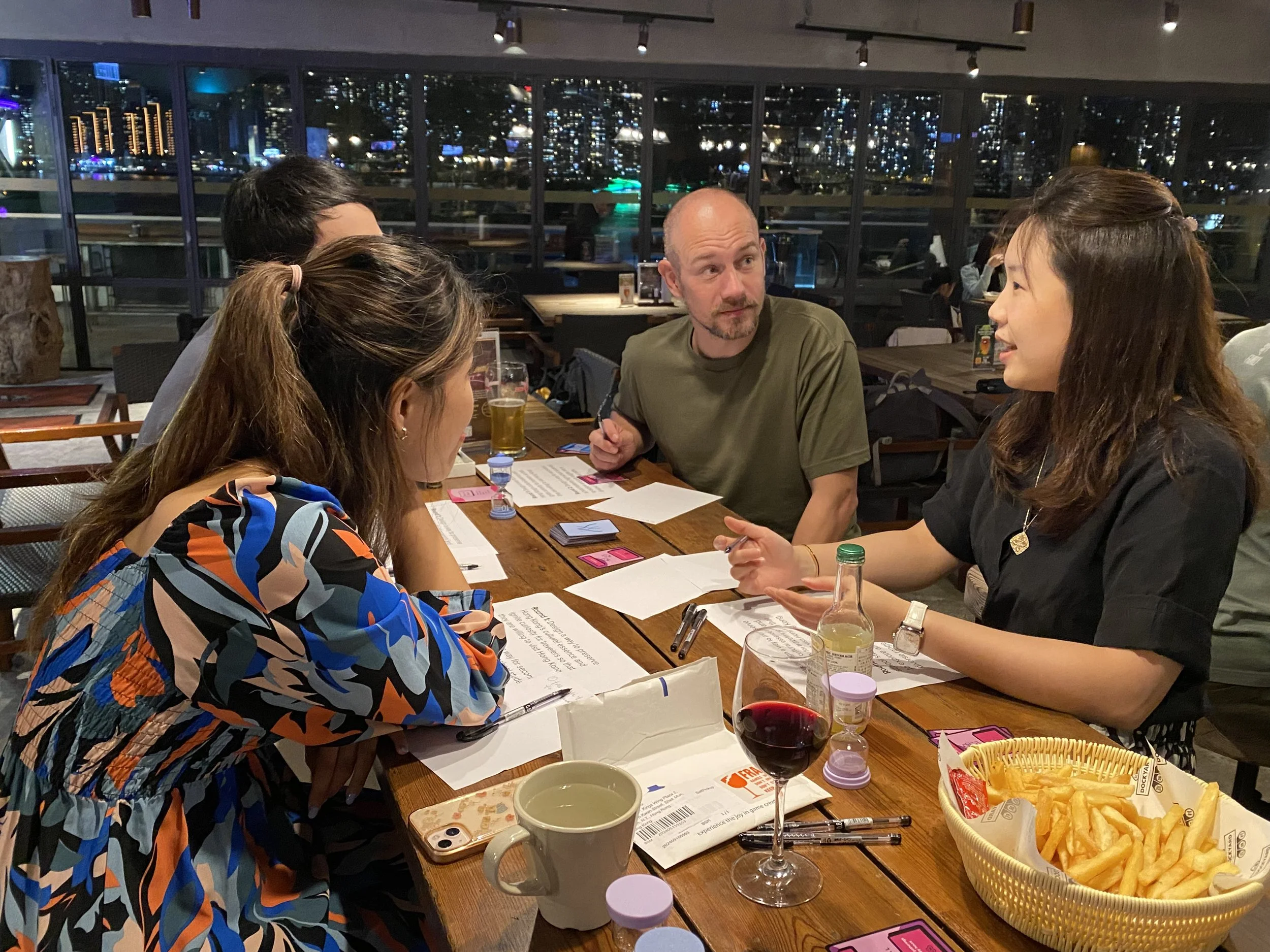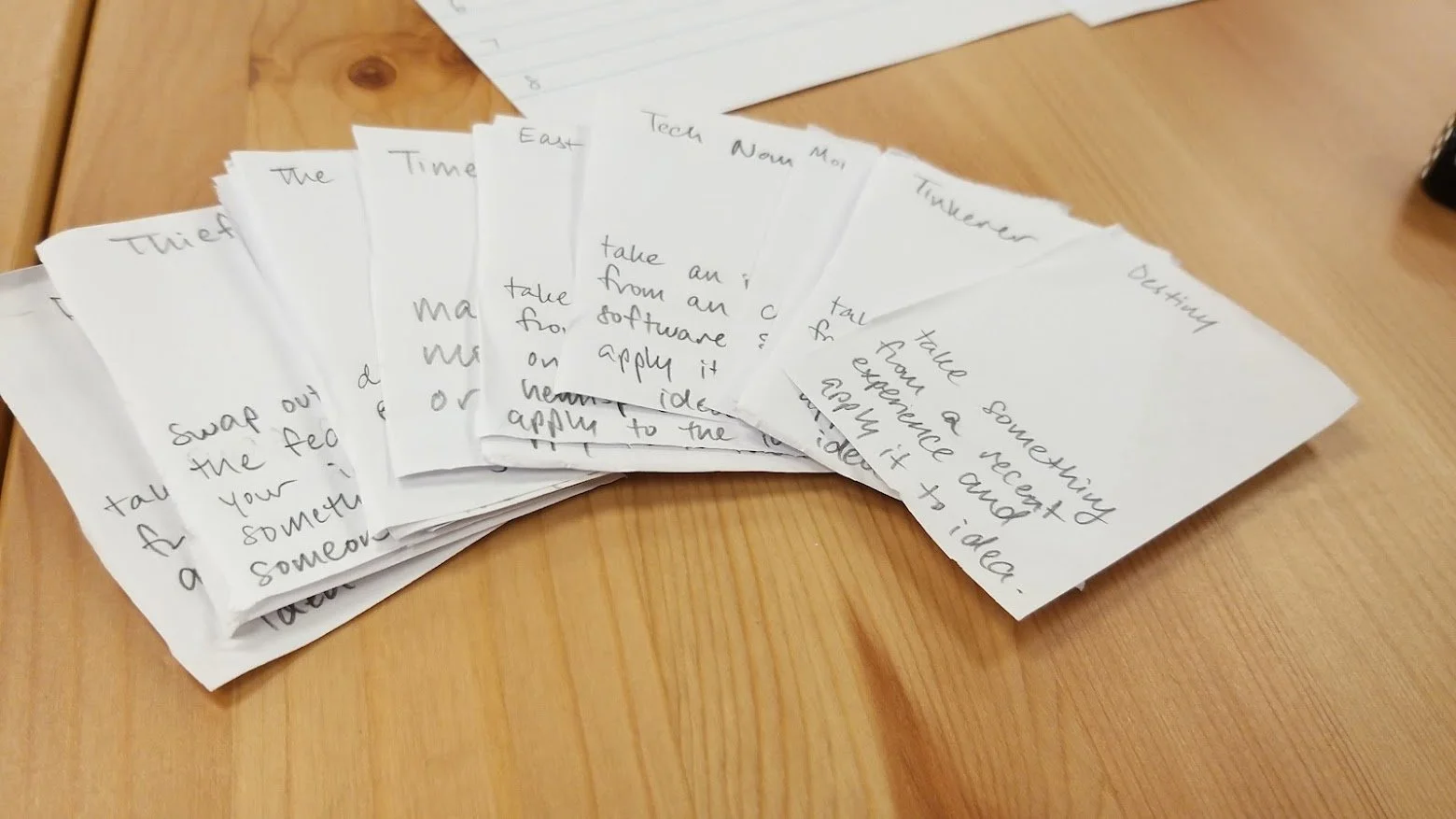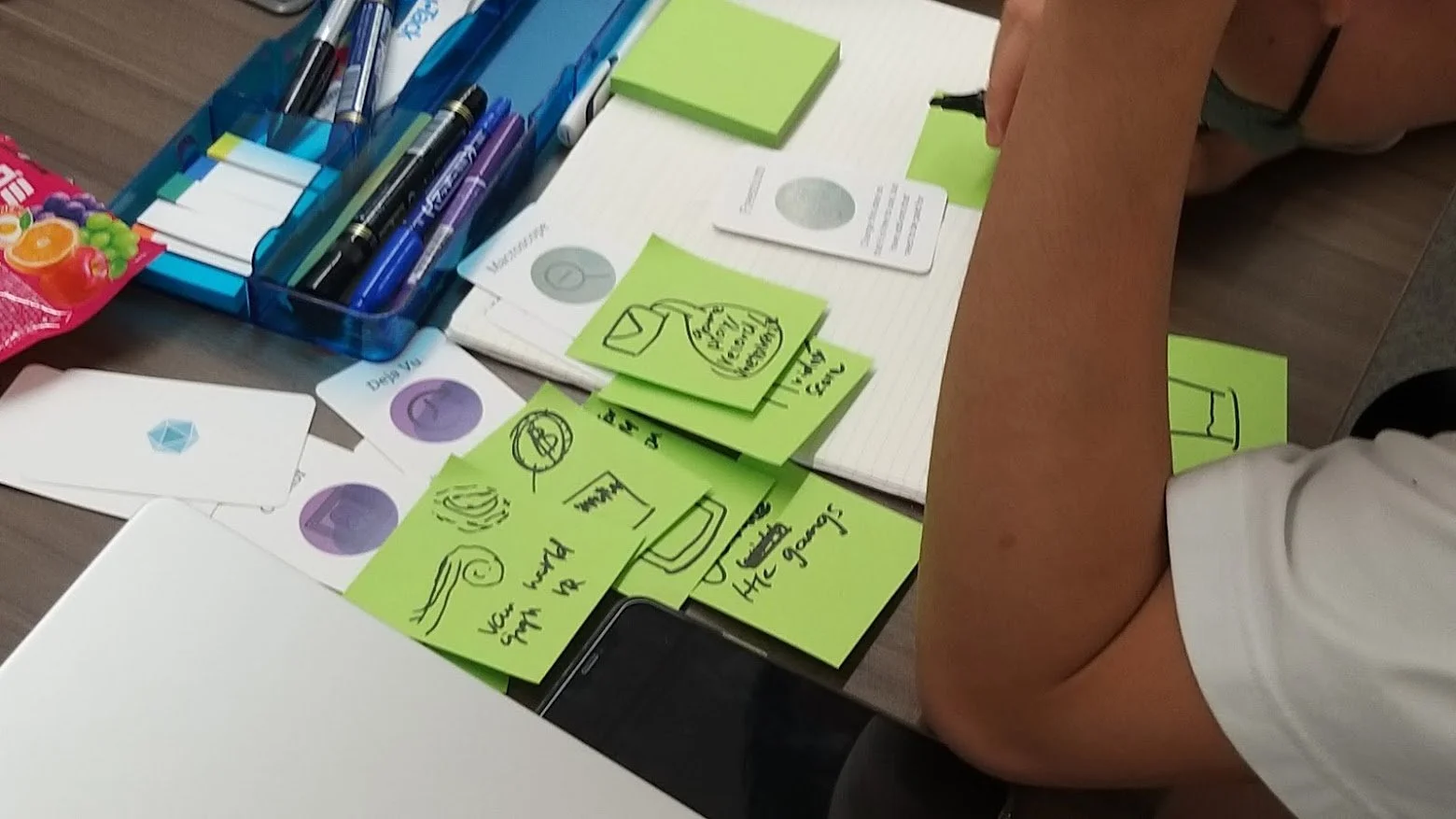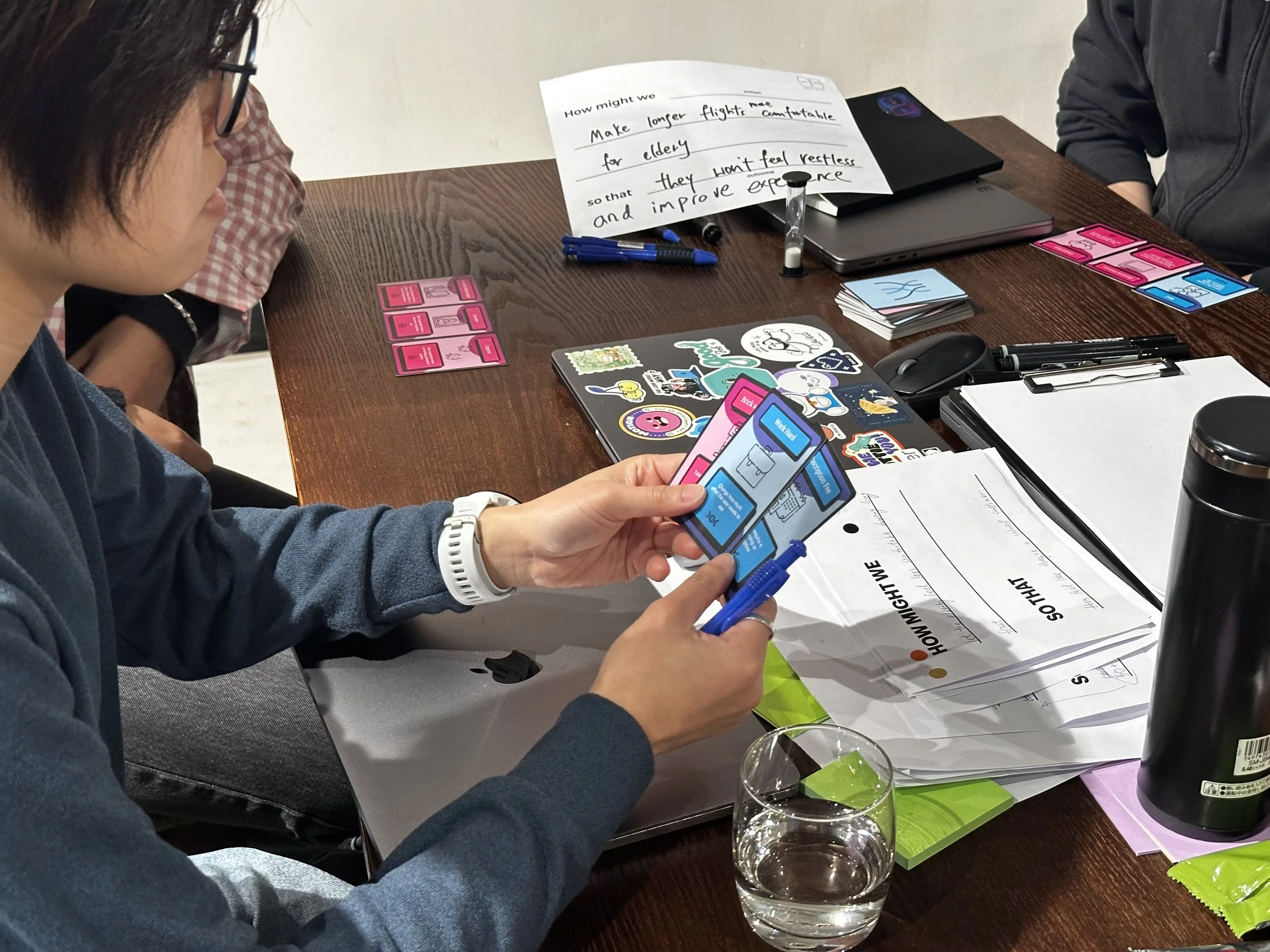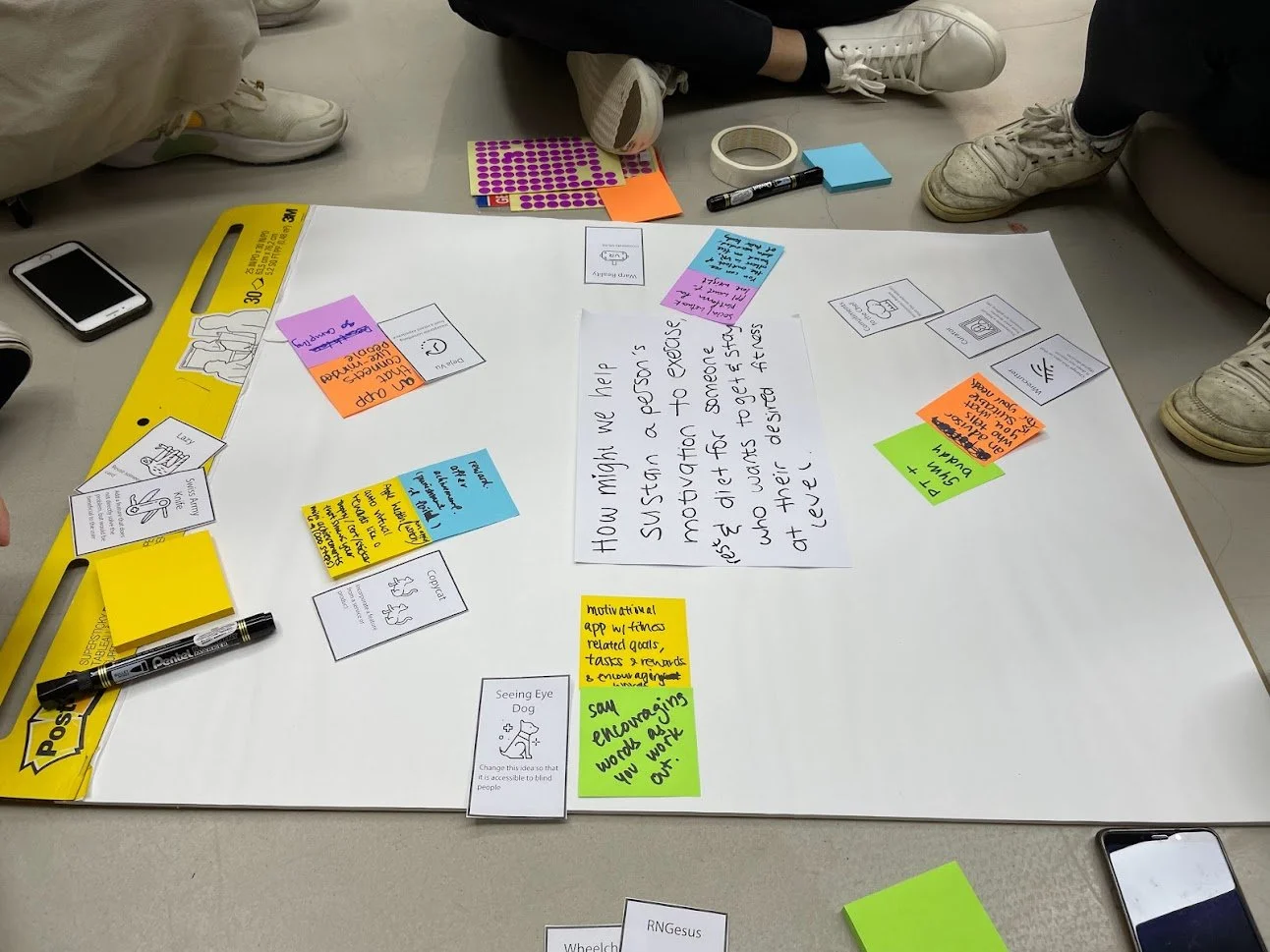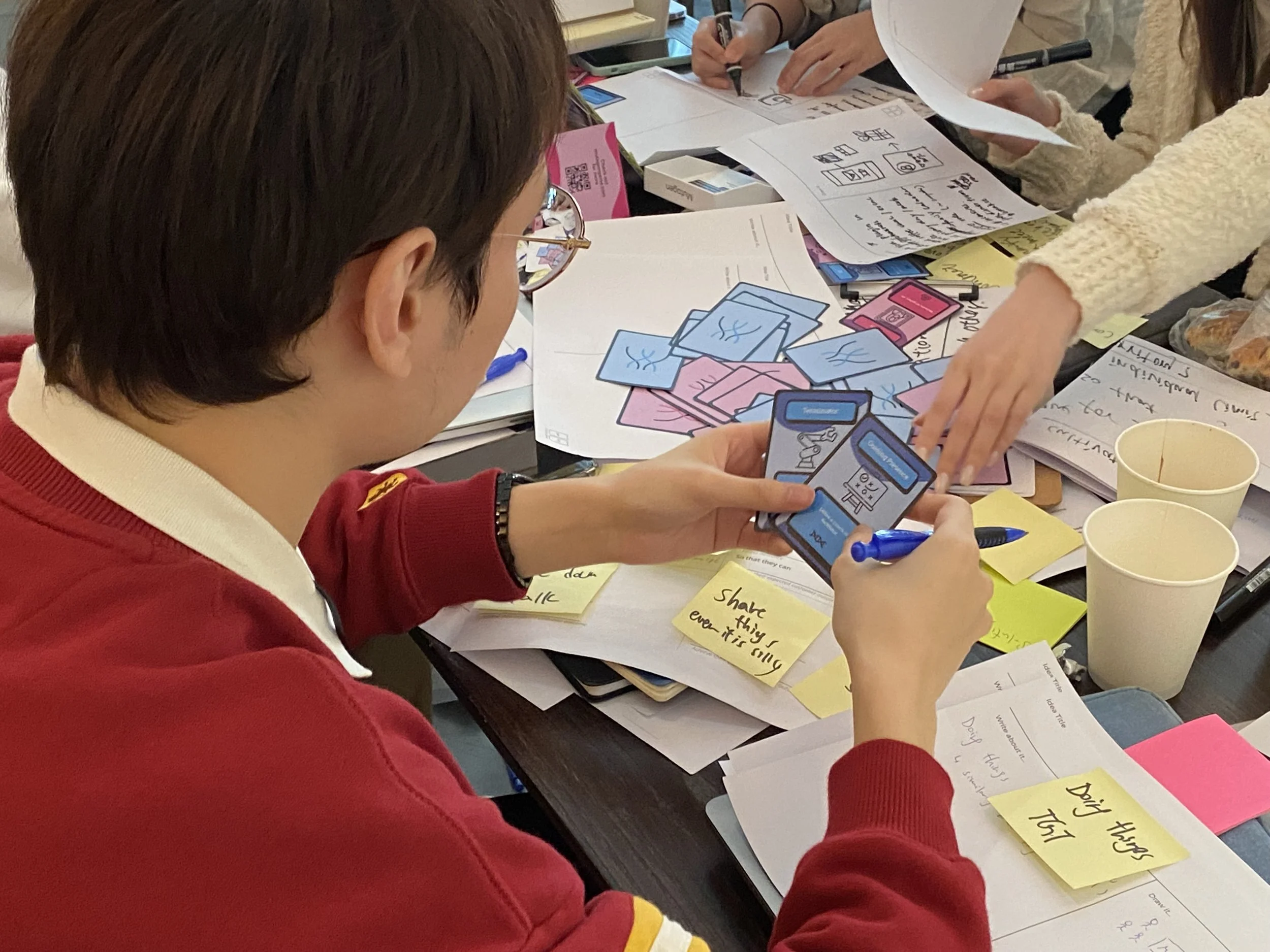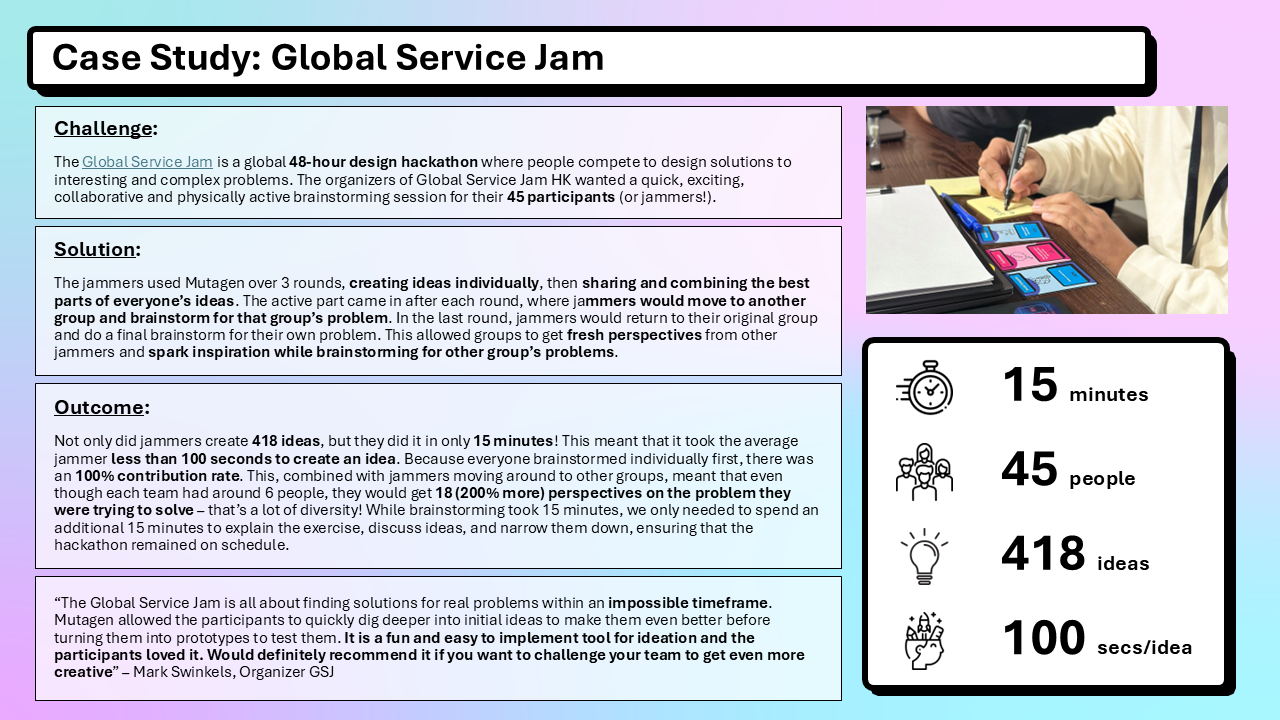Mutagen
While it might seem counterintuitive, having no constraints isn’t always good for creativity. Mutagen is a gamified brainstorming tool that uses constraints and fast-paced fun to make ideation quicker and more creative.
Created solo
Table of contents:
Background
Task
Execution
Outcomes
Background
Creative thinking is one of the most sought-after skills, especially in the era of AI (World Economic Forum). However, people often don’t know how to develop these skills, and they trick themselves into making them their identity. Product managers and design facilitators/consultants often need to help their colleagues ideate, as they can’t be the only ones coming up with ideas. However, current brainstorming methods tend to be relatively unstructured and ineffective, leading to wasted efforts in brainstorming.
Context
Since people can’t always verbalize or are reluctant to discuss their experiences, I chose to conduct field research and observe how people acted when brainstorming. My field research, combined with follow-up user interviews, revealed a few things:
Some people could come up with ideas, but didn’t feel confident in voicing them
Follow-up research showed that this happened much more in large group settings, where it was hard to propose alternative ideas or speak up once the group had latched onto an idea
Some people’s minds would go blank, and they would have trouble thinking of any idea
Follow-up research showed that this would be due to the choice paralysis phenomenon, where too many options could lead someone to have trouble picking anything
Choice paralysis also made it hard for someone to feel confident in their ideas because they were afraid there might be a better idea out there
Research
Task
I created Mutagen by myself. This meant I conducted user research, did the graphic design and prototyping, and even went to production and manufacturing.
The Team
Improve people’s confidence in their ideas
Reduce choice paralysis
Overall goal: Get more ideas from a wider variety of voices
The Mission
While I was creating Mutagen, I had been working at an edtech startup that used gamification to teach kids complex topics. I saw how gamification could be used to make even the most boring or difficult topics fun, but effortless too. I strove to achieve this with Mutagen and gamify brainstorming to help people be more creative without it feeling like a chore.
The Plan
Execution
Improving Confidence
The first problem to tackle was to improve the confidence of people who were brainstorming. I noticed that during group brainstorming sessions, there was always an imbalance of contributions. You would have shyer or more introverted people who didn’t want to interrupt the louder people. In the past, I had learned about brainwriting, where people would brainstorm individually. The bar for confidence would be lower, as people wouldn’t feel pressure to present the perfect idea to the group. Furthermore, it would lead to more ideas and diversity as people weren’t just following one train of thought. I tested this with users, and it proved highly effective, significantly improving the speed at which ideas were generated and enabling everyone to contribute.
Another way I sought to improve confidence in users was to help them feel like their ideas were creative. To achieve this, I first reflected on how I created ideas, and quickly realized that I often got inspiration from innovative companies like Uber, Airbnb, or Facebook, and that this could be expanded to other industries or contexts. Further research proved that this would be an effective method to come up with creative ideas, and is even employed by innovative firms like IDEO. To facilitate this mash-up, I used cards with various prompts to spark inspiration. For example, one of the cards has users take inspiration from a recent browser or app they opened. This helps focus the user’s mind and gets them thinking about what they can take from a different industry, leading to a more creative idea than what they might normally come up with.
IDEO Mash-Up
IDEO’s Mash-up in comparison to the Mutagen cards. Similar purpose, but with different form factor that drastically changes how it’s facilitated and how users perceive it.
Reducing Choice Paralysis
Choice paralysis was the second obstacle to tackle. I did this by using cards and giving each card its own prompt. This meant that users would have to use the prompt they received, and couldn’t keep reverting to the same sources of inspiration they would always use. I used cards as users would draw random cards from a deck, truly forcing them out of their comfort zone, but guiding them through constructing their idea.
Reducing choice paralysis this way not only helped people come up with ideas, but it also gave them more confidence. What I found is that not only did choice paralysis make it harder to come up with an idea, but it also made users less satisfied with what they created because they thought a better idea might be out there. What would end up happening was that even if users did have an idea in mind, they might not verbalize it, as they would be afraid it would be seen as uncreative or bad. The beauty of card prompts was that it pushed users out of their comfort zones, and any idea they came up with would inherently feel more unique than ideas conjured up using normal brainstorming techniques. With more constraints, people would also come up with ideas faster, as they wouldn’t have to scour all the different ideas they could come up with.
Gameplay
I created two ways to play Mutagen based on what users wanted to achieve. The first gamemode was fast-paced, where players would flip over a card and race to see who could come up with an idea first. The speed aspect made it so that players wouldn’t have enough time to judge and subsequently censor their ideas. In addition, with the quick pace, there was less debating, leading to more ideas being created and less discouragement of ideas. This gamemode was optimized for enjoyment, as well as generating energy and excitement for brainstorming.
The second gamemode was a slower one, aimed at players who didn’t want to compete with other players or have to blurt their ideas out. In this gamemode, players would create an idea using one of three cards within two minutes. This still presented a challenge, but more importantly, it had all the benefits of brainwriting (more ideas and diversity) plus the benefits of the Mutagen cards (more creative ideas and faster). This gamemode was optimized for larger groups, faster ideation, and more diversity.
First gamemode
Mutagen Cards
Second gamemode
Visual Design
For the visual design of the cards, I took heavy inspiration from neubrutalism. The rounded edges and the vibrant colors screamed creative, playful, and high energy. Originally, the colors for my cards had been rather dull shades of purple and green, but after getting some feedback from a user that they’d want to see something more vibrant, I changed them to a much more neon blue and pink. I also included icons to provide some aesthetic to the card, as opposed to just text, as well as a title similar to many trading card games that would build on the gamification aspect.
When working on the visuals, I was torn between minimalistic icons and pictures, something a professor of mine had suggested. I conducted A/B testing with players and found that the minimalistic icons were just the right amount of aestheticism without them being too distracting, which the images were.
The evolution of the Mutagen card design.
Outcomes
Brainstorming KPIs
Talking to my users (product managers, designers, facilitators, etc.), I found out that these were the core metrics for a good brainstorming session:
High number of ideas
High and equal involvement from the team
Didn’t take up too much time
So, how did Mutagen do on these fronts?
Generates about 3x the number of ideas compared to the Crazy-8
Involves everyone from the team equally
Gamemodes could be as short or long as needed. Players generate on average 1 idea every 1.5 minutes
In addition, the game was also very simple, meaning that not only was it quick to play, but it was quick to learn as well, which would be especially useful for design consultants who constantly work with new clients
Achievements
Mutagen was not just a project. It’s a business and a product. Here’s what I’ve achieved with it:
Kickstarter was fully funded within 24 hours and surpassed the original funding goal by over 200%
Used by companies such as Google, Bain, and DBS
Figjam widget has over 4.5k users
Case Study

